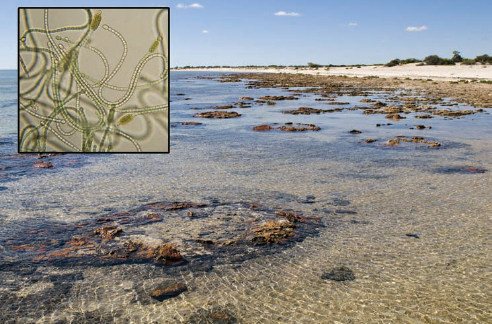Forming FossilsBeginnings of Life |
What were the conditions on the early Earth that scientists believe may have led to life? |
Two major theories explain how life could have grown on early Earth. The first theory states that life grew from a primordial “soup,” a thick stew of biomolecules and water. Chemical reactions were then triggered by the Sun’s ultraviolet rays, lightning, or perhaps even the shockwaves from violent meteor strikes that were more common at the time. These reactions produced various carbon compounds, including amino acids, which make up the proteins found in all living organisms. This theory was postulated after a famous experiment performed at the University of Chicago in 1954 by then-graduate student Stanley Miller (1930–2007), and his advisor, chemist Harold Urey (1893–1981). They showed that the amino acids could be formed from chemicals thought to exist in the early Earth atmosphere when they were combined with water and zapped by lightning.
The second theory of life centers around a discovery made within the last half century: hydrothermal vents, which are cracks caused by volcanic magma seeping through the deep ocean floor. There were probably many more hydrothermal vents during the early history of Earth, as the crust was newer, and thus thinner, than today’s cooled, thicker crust. The organisms around these vents did not need to rely on photosynthesis for energy. Scientists know that today’s volcanic vent organisms live off the bacteria around the vents, which in turn extract energy from the hot, hydrogen sulfide-rich water found around the sunless cracks in the ocean floor. Early organisms could have survived in much the same way.
In actuality, the conditions described by both theories could have existed simultaneously to produce the planet’s early life.

